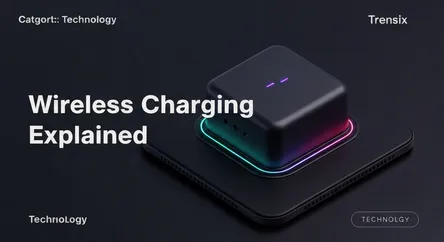Technology
Wireless Charging Explained

Discover how wireless charging works! Learn about Qi technology and how it powers your favorite gadgets without any cables or physical connectors.
What is it?
Wireless charging, also known as inductive charging, is a technology that allows you to power up devices without a physical cable. It works by transferring energy through electromagnetic fields. A charging pad or station contains a transmitter coil that creates an oscillating magnetic field. When a compatible device with a receiver coil is placed on it, this field induces an electric current in the receiver coil, which then charges the device's battery. The most widely adopted standard for this technology is called Qi (pronounced "chee"), ensuring interoperability between different brands of chargers and devices.
Why is it trending?
The primary driver for the wireless charging trend is sheer convenience. It eliminates the hassle of plugging and unplugging cables, reducing wear and tear on charging ports and decluttering spaces. The widespread adoption by major smartphone manufacturers like Apple, Samsung, and Google has made it a mainstream feature. Furthermore, the integration of wireless charging pads into furniture, vehicles, and public spaces like cafes and airports has made it more accessible than ever, solidifying its place as a must-have modern convenience.
How does it affect people?
Wireless charging fundamentally changes the daily routine of managing device power. It creates a seamless "drop and go" experience, allowing people to effortlessly top up their batteries throughout the day at home, work, or in their car. This constant, easy access to power reduces "battery anxiety." While typically slower and slightly less energy-efficient than traditional wired charging, the trade-off for a cable-free, convenient lifestyle is a significant benefit for many users, simplifying how we interact with our most essential personal electronics.